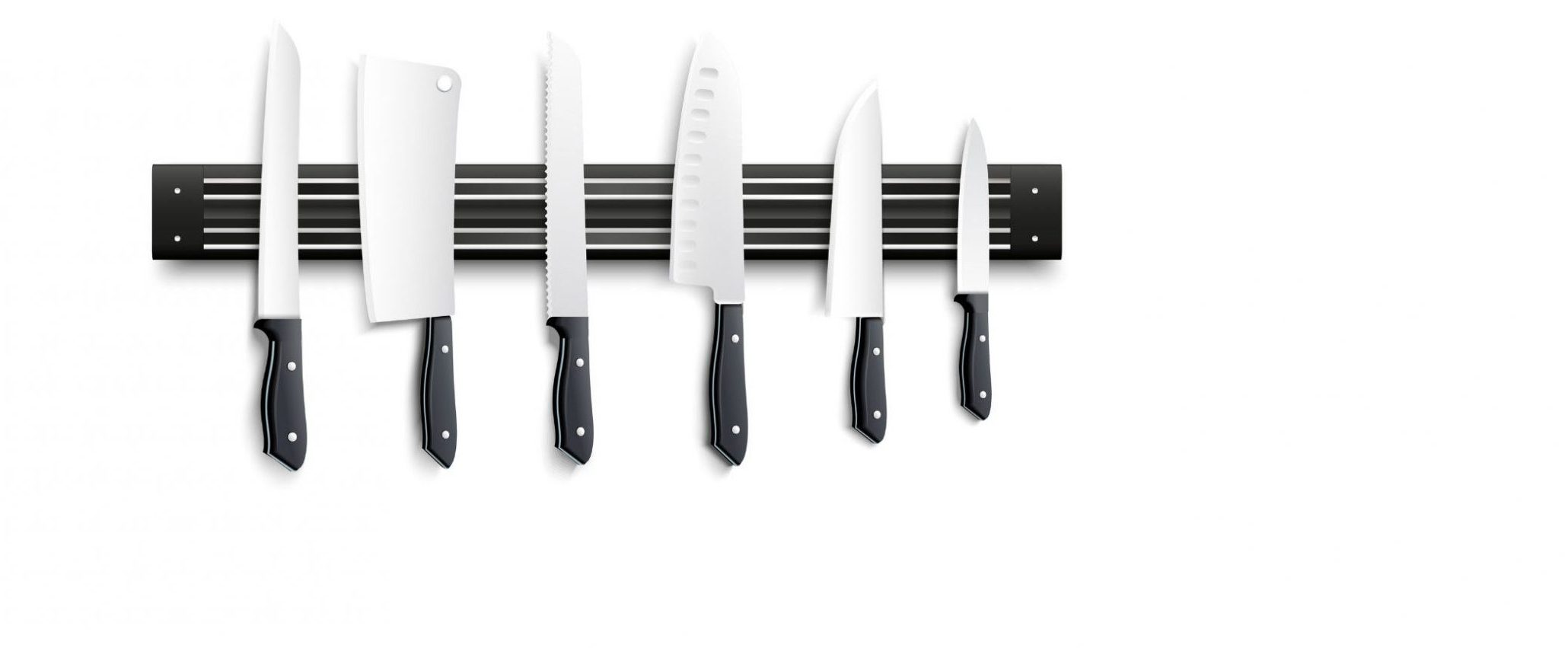Whether you’re strictly a home chef or spend your time working in a kitchen, you have accumulated a set of trusty kitchen knives that you use frequently. Regardless of the price of each blade, or the cumulative price, it’s best to protect them and extend their kitchen life as much as possible. You’ll save money and time hunting for new knives and create a safer environment in the kitchen.
Below, you’ll find a list of the things that will ruin your kitchen knives and how to prevent them.
1. Storage
Storage is one of the most important aspects of keeping your knives longer. Even if you take all the necessary precautions of cleaning, sharpening, etc., the incorrect storage can lead to moisture, rust, or knife blade damage.
A sharp knife should not go into your utensil drawer. By doing so, the kitchen knife blade can get broken or, at the very least, become dull due to shifting when the drawer is open and closed. If you reach in the drawer and rummage around, you could potentially get cut or jabbed by the knives. Depending on the knives you have, a different solution will work best.
So, how should you properly store your kitchen knives?
Knife Block
A wooden knife block seems to be one of the most popular methods for storing knives. Many knives already come with a knife block for storage, making it an easy choice. Knife blocks contain various slot sizes, including a place to add a paring knife, bread knife, chef’s knife, and more. You can also purchase a knife block separately, like the HENCKELS Hardwood Knife Block Knife Storage 11-slot.
If you’ve purchased your knives separately instead of as a set, you may want to consider a different option as the knife slots may not fit your knife collection.
Magnetic Strip
Magnetic strips are another popular choice for many – especially those who splurge on higher-quality knives as it’s a way to show off your knife collection and safely store them. Once the strip is installed on your wall, you can add your knives directly to it, and they stick magnetically.
These strips are affordable, with plenty of options available like the Modern Innovations 16 Inch Stainless Steel Magnetic Knife Bar.
Tip: Add your kitchen knives and other knives handle down so they’re more convenient to reach for and your hands remain protected.
Knife Sheath
Knife sheaths are individual covers for your knives. This is an excellent alternative to purchasing a block or magnetic strip if you only have a few kitchen knives. Some knives already come with a sheath, though there are plenty of available sheaths for purchase.
You typically need to purchase sheaths according to which type of knife you want to protect (chef’s knife, deboning knife, etc.). However, sheath sets come in various sizes, like the Kessaku Sheath Set – 9 Piece. These sets allow you to find sheaths that fit various knife sizes more easily.
2. Cleanliness
After use, improperly cleaning your knives can also cause the blade to rust, break the knife tip, or become dull. Washing with warm water and gentle soap is the best method for cleaning knives. It’s also important to dry them right after to avoid rusting.
Always avoid putting your knives in the dishwasher as a rule of thumb. While some knives may say they are dishwasher safe, it’s still best to avoid the dishwasher as it can cause the knives to shift around and damage other kitchen tools.
You’ll also want to avoid letting your knife sit wet for an extended time, like soaking them in the sink. Excess moisture can cause rust on your knives and shorten their kitchen life.
You’ll also need to oil your knives after cleaning them if you have carbon steel knives in your kitchen, like the Opinel N Degree7 Bechwood Handle Carbon Steel Knife. This particular metal is super sturdy but also has the potential to rust more quickly. Adding a thin layer of oil helps protect them from rust.
3. Sharpener
Using the correct knife sharpener will also aid in extending the life of your knives. While it might seem like all sharpeners are the same, some varieties have the potential to overheat steel (a common knife blade material), causing it to be permanently damaged.
Various sharpeners are available, like a whetstone, electric sharpener, and sharpening rods, to name a few. Different knife materials and uses dictate which sharpening methods are best. When purchasing a knife, research is the key element. This will help you determine the best sharpening method. For a more comprehensive guide, check out our website, which details the best sharpener for any knife.
As for the frequency of sharpening, it’s typically good to sharpen your knives about every two weeks. However, this frequency will change depending on how often you use each knife. It is crucial to keep your knives sharp as a dull knife is very dangerous in the kitchen.

4. Wrong Use
Using a knife for incorrect food items can also cause damage and potentially ruin the knife. When searching for a knife, you can find specialty knives for meat, fish, cheese, fruit, etc. Choosing the correct knife will help protect your knife.
For example, it’s essential to use the right knives when cutting meat. If you choose a paring knife, it will not be sharp enough to cut through bones or other tougher cuts of meat. It could potentially slip while cutting, causing an injury. Meat cleavers are a better option for cutting through bones and larger pieces of meat.
While there are some knives available that you can use for different foods, like a chef’s knife, there are many that are only for the specified items. For example, you should never use a bread knife on meat. It will cause jagged edges to the meat and perhaps not cut through. Cheese knives are also not ideal for cutting meat. These examples are not sharp enough to safely get through various proteins.
Misusing a knife is related to the food items you’re cutting and various activities like opening drawers, cutting bags open, or other non-food-related tasks. Protect yourself and your hands by using each knife for its intended purpose.
5. Cutting Board
The length of time your knives last is also impacted by using the correct cutting board. Cutting boards are not only to help you avoid scratching your countertops, but the material aids in preserving knives. If you use a too-hard surface or the wrong cutting board, you’re at risk of dulling, chipping or breaking your blade.
While plastic cutting boards are more convenient as they can go in the dishwasher, your best bet will be a wooden cutting board. Most wooden cutting boards are much softer than plastic, so they will help you avoid destroying your knives’ blades. Woodcutting boards are available in a wide price range, making it easy to find one within your budget, like the Acacia Wood Cutting Board – Ultra Thick 16” x 12”.
One mistake many people make while using a cutting board is sliding the chopped food off of the board with the sharp edge of the knife. This is dangerous, but it can also dull your blade if you accidentally get it caught on the cutting board material. You can avoid this by using the dull side of the knife instead.
Summary
Now that you know what things will ruin your knives, you can expect your knives’ lives to be extended. The above tips and information will help you have sharper, protected, and safer kitchen knives. Plus, you get to avoid shopping for knife replacements for longer!







Post Your Thoughts